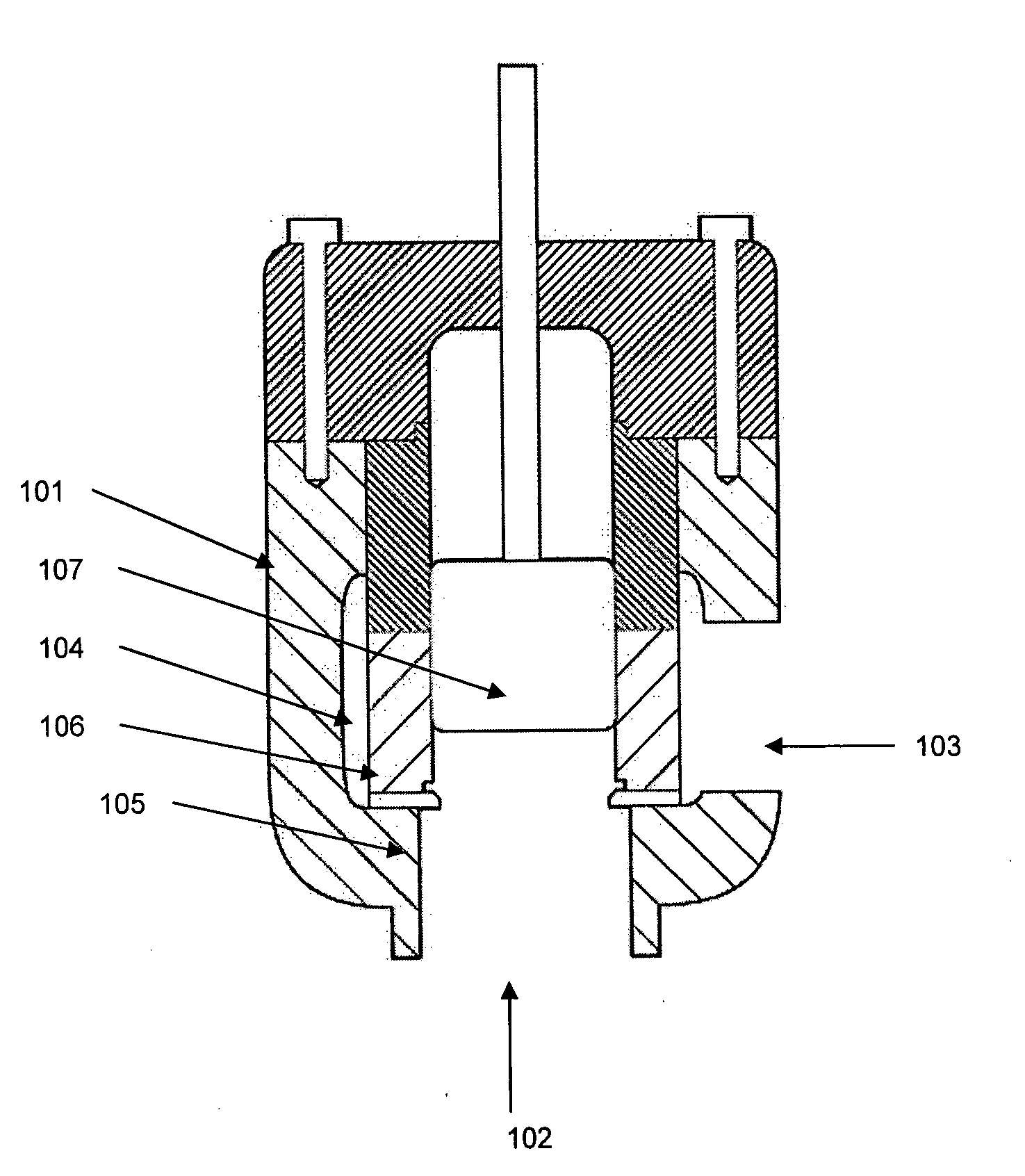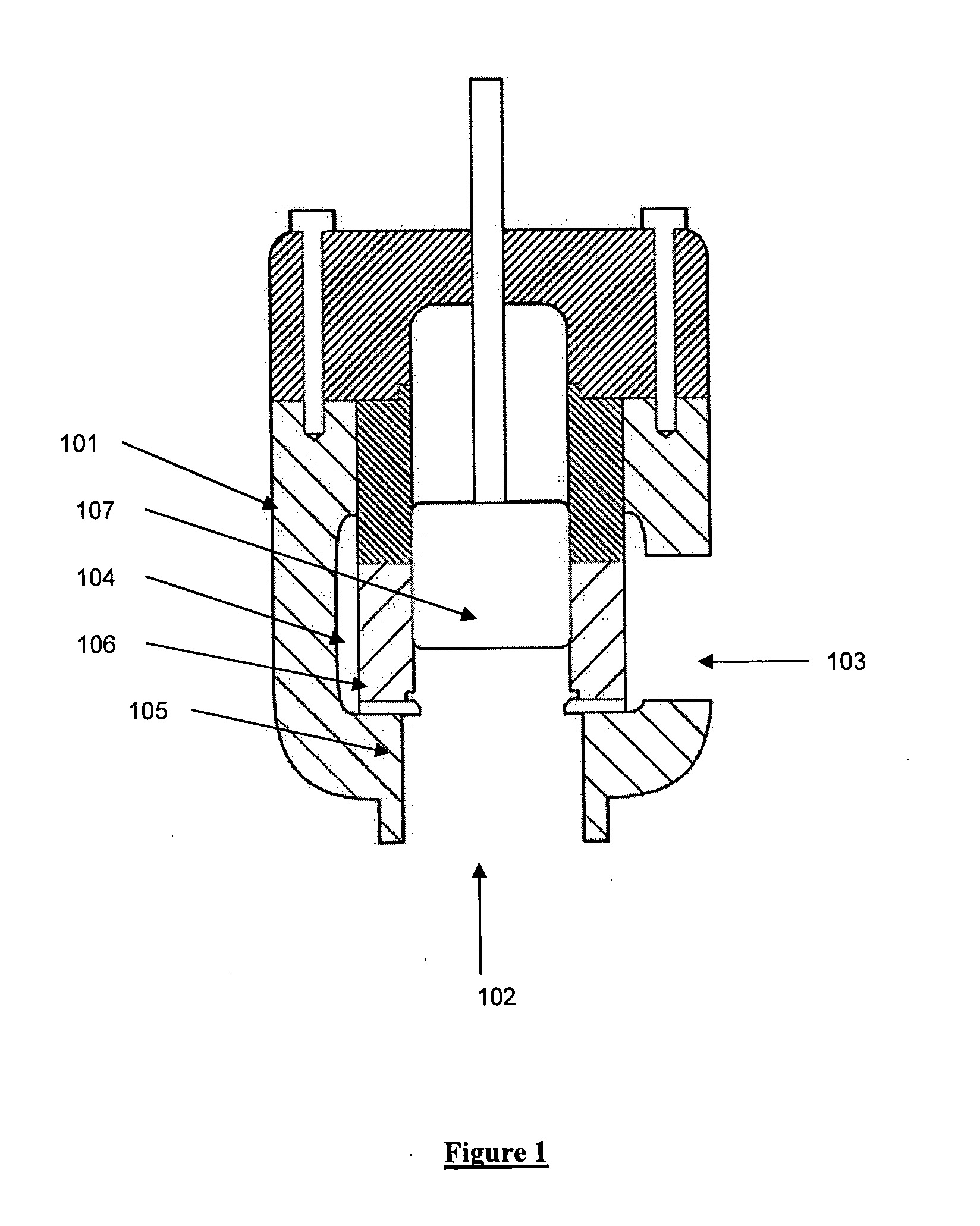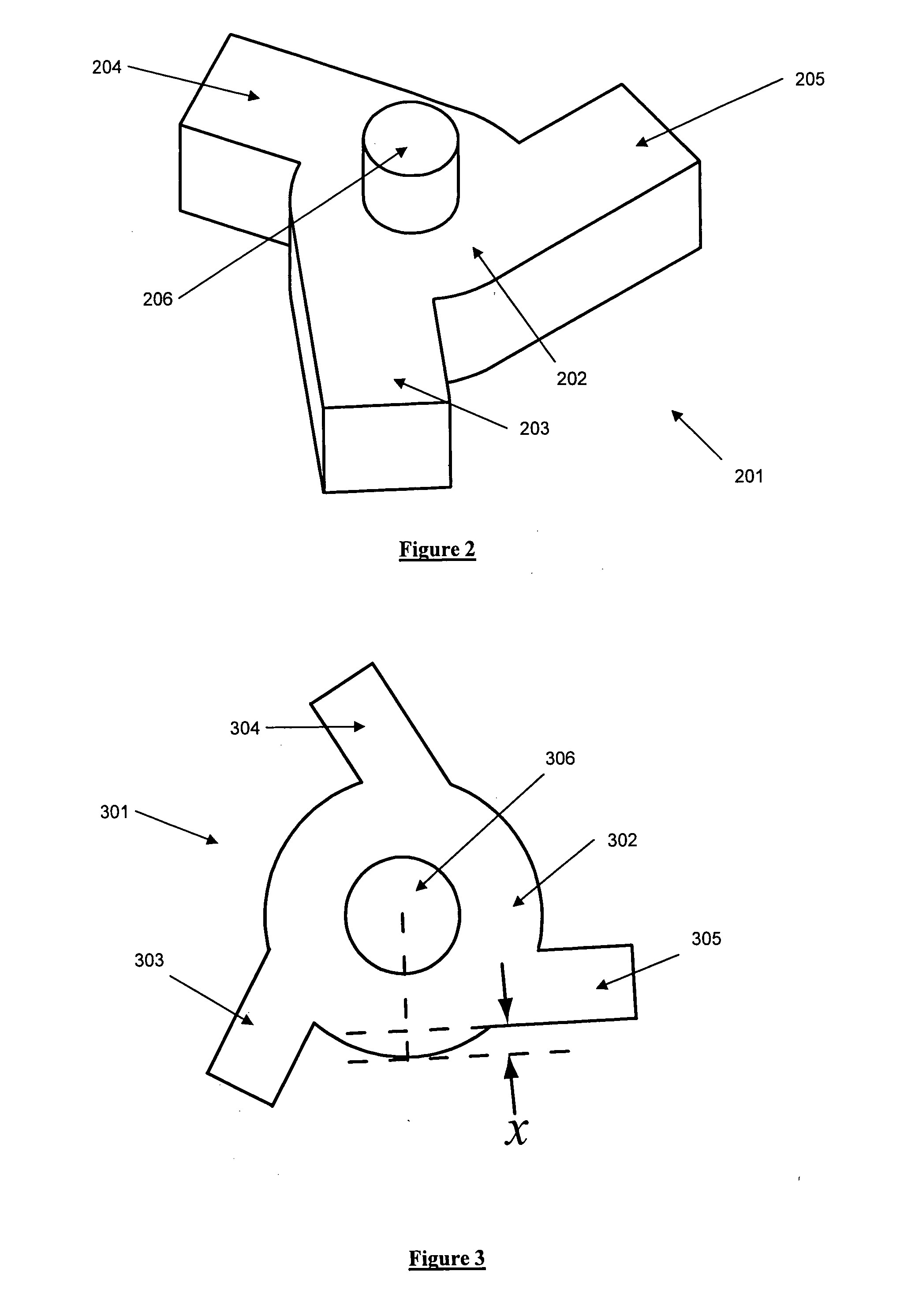Fluid Control
a technology of fluid pressure and control, which is applied in the direction of manufacturing tools, welding equipment, other domestic objects, etc., can solve the problems of pressure drop across the flowpath, and achieve the effects of reducing erosion, reducing erosion and reducing pressure within the vortex chamber
- Summary
- Abstract
- Description
- Claims
- Application Information
AI Technical Summary
Benefits of technology
Problems solved by technology
Method used
Image
Examples
Embodiment Construction
[0047]Referring to FIG. 1 an example of a valve trim in a fluid control valve is shown as common in the art comprising a valve body 101 with a inlet 102 and outlet 103 in fluid communication with one another via a central chamber 104 containing seat ring 105, valve trim 106 and plug 107. When the valve plug 107 sits on the valve seat ring 105 no flow is permitted to pass through the valve. As the plug 107 is lifted in a controlled movement, flow is allowed to enter the valve through inlet 102 and passes through the valve trim 106, which reduces the fluid pressure, and out of outlet 103.
[0048]The trim 106 has a plurality of flowpaths therethrough which have a resistance to flow. The flow direction shown in this valve is known as over the plug flow and the invention will be described in relation to such a flow direction. Flow direction in the opposite direction, i.e. flow enters at 103 and exits at 102 is known as under the plug flow and the invention is equally applicable to such a f...
PUM
| Property | Measurement | Unit |
|---|---|---|
| flow resistance | aaaaa | aaaaa |
| radius | aaaaa | aaaaa |
| resistance | aaaaa | aaaaa |
Abstract
Description
Claims
Application Information
 Login to View More
Login to View More - R&D
- Intellectual Property
- Life Sciences
- Materials
- Tech Scout
- Unparalleled Data Quality
- Higher Quality Content
- 60% Fewer Hallucinations
Browse by: Latest US Patents, China's latest patents, Technical Efficacy Thesaurus, Application Domain, Technology Topic, Popular Technical Reports.
© 2025 PatSnap. All rights reserved.Legal|Privacy policy|Modern Slavery Act Transparency Statement|Sitemap|About US| Contact US: help@patsnap.com



